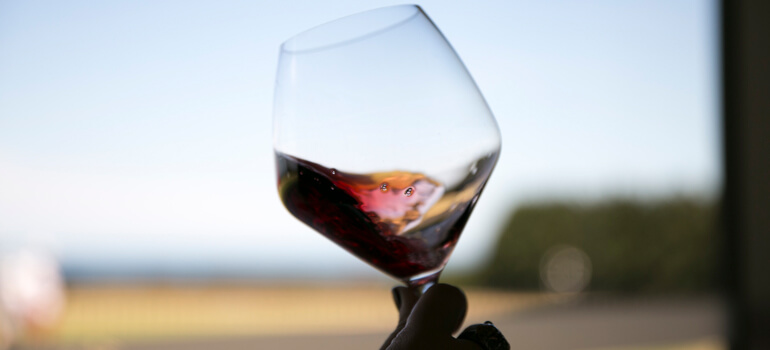Malolactic fermentation (MLF) softens the taste and texture of wine, adds character nuances and stabilises the wine prior to bottling – so getting it right is critical.
Traditionally, winemakers waited until after yeast-driven fermentation had been completed before beginning MLF. Then, studies started to explore the option of doing the two together, as tends to happen with uninoculated ferments. Today, there are a range of options for ‘malo’.
Matt Holdstock, Senior Oenologist at the Australian Wine Research Institute (AWRI) said recent collaborative winery-scale trials on red and white wines funded by Wine Australia demonstrated that co-inoculation could improve MLF efficiency in the Shiraz wines the team studied. The effectiveness of co-inoculation was influenced by factors including choice of Oenococcus oeni (O. oeni) strain and could be limited in certain stressful white wine conditions.
The study also suggested that MLF efficiency was not improved by use of malolactic nutrients in the either the red or white wines studied.

A separate study looked at MLF in difficult white wines (e.g. >14 per cent alcohol, >40mg/L total SO2, pH >3.5). The research found that direct inoculation of bacterial starter cultures into these types of white wines resulted in MLF failure.
Attempts to improve MLF efficiency in these conditions revealed that in some cases pre-acclimatisation of starter cultures could improve bacterial survival. Current research is investigating the effectiveness of co-inoculation for improving the survival of bacterial starter cultures in stressful wine conditions.
Getting it right
So how can winemakers ensure they get successful ‘malo’?
According to Matt, a critical first step is understanding the key wine compositional variables that influence the process – and at what ranges these variables are favourable or unfavourable for MLF induction.
Wine composition is key
Whether inoculating a malolactic starter culture or relying on natural microflora, obtaining an accurate analysis of the chemical composition of each wine is a key first step prior to MLF induction.
So, what constitutes both favourable and unfavourable wine conditions? See below:
|
Parameter |
Favourable |
Unfavourable |
|
Temperature (°C) |
18-22 |
Less than 16 and greater than 25 |
|
pH |
3.3-3.5 |
Less than 3.1 |
|
Free SO2 (mg/L) |
<8 |
>10 |
|
Total SO2 (mg/L) |
<30 |
>40 |
|
Alcohol |
<13 |
>14 |
Matt said a range of other factors can significantly affect the survival of malolactic starter cultures and require consideration to optimise MLF performance. These include:
Choosing the appropriate bacterial strain
Select an appropriate bacteria strain that is tolerant to the specific wine conditions of pH, alcohol and sulfur dioxide (SO2) levels and temperature.

‘Determine if bacteria strain is compatible with the fermentation yeast strain and suited to the required timing of inoculation’, he said.
Choice of yeast strain
Metabolic by-products and/or nutritional changes from the fermentation yeast strain may stimulate or inhibit the malolactic bacterial strain.
‘For example, certain yeast strains have the capacity to produce SO2, which – in sufficient concentration – becomes inhibitory to malolactic bacteria. Other inhibitory yeast metabolites include certain medium chain fatty acids and bioactive peptides’, said Matt.

He said the potential for such yeast-bacteria interactions makes it very important to choose compatible pairings of yeast and malolactic bacteria strains. This becomes essential when co-inoculation is used.
Timing of inoculation
Sequential inoculation is a traditional strategy where the malolactic starter is added after completion of alcoholic fermentation. Matt says this approach may be less effective for difficult wine conditions, ‘particularly when alcohol content is high and combined wine stress factors become inhibitory to the survival of malolactic bacteria.’
As an alternative strategy, co-inoculation of MLF bacteria 24–48 hours post-yeast addition is a practical way to improve MLF efficiency, reduce overall fermentation time and overcome potentially difficult must/juice composition and high alcohol.
‘Yeast and bacteria strain choice is important and must be taken into consideration for co-inoculation.’

Quick tip: While O. oeni strains are predominantly used for MLF induction, early inoculation protocols have widened the scope of MLF starter preparations to include certain Lactobacillus plantarum strains.
Preparation and inoculation of the bacterial culture
Finally, carefully follow the manufacturer’s instructions when preparing and inoculating the bacterial starter culture, since different manufacturers may have different protocols.
For example – some strains are prepared by rehydrating in water using a particular time/temperature combination whereas others can be added directly without any pre-inoculation procedure. Other strain preparations may require one or more stages of pre-acclimatisation and/or the use of specific nutrients prior to inoculation.
